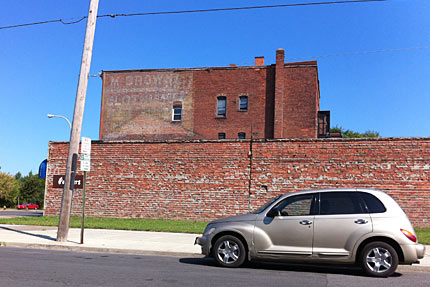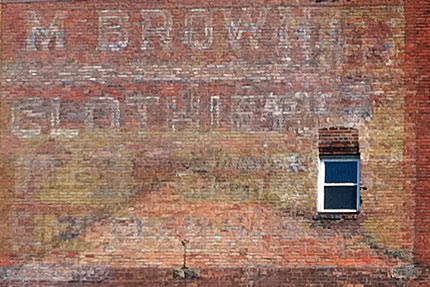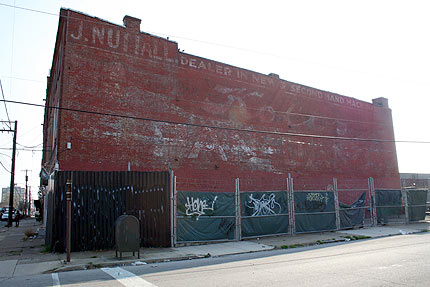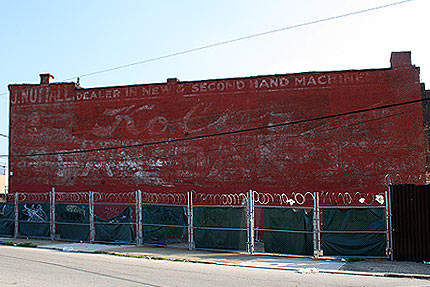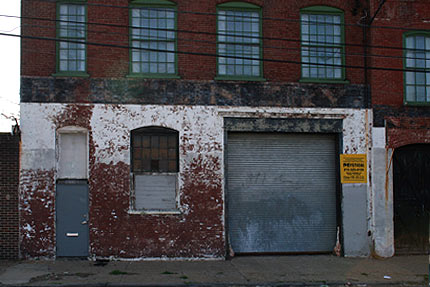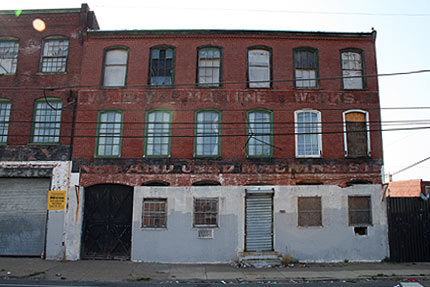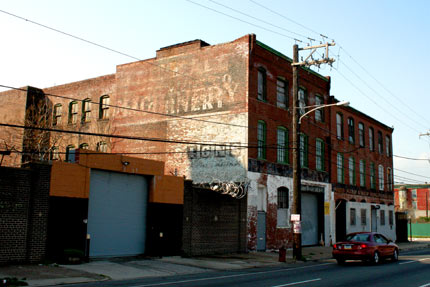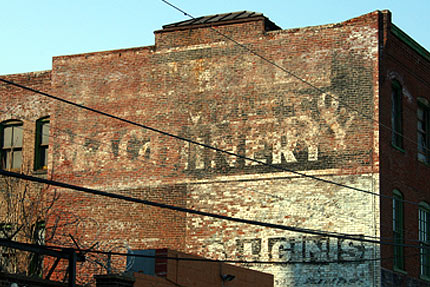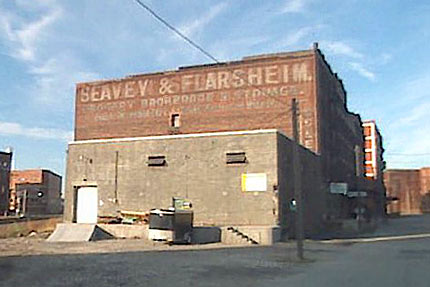 "Grocery brokerage storage, commission agent, food marketers."
"Grocery brokerage storage, commission agent, food marketers."
Originally established in 1882 by J. C. Salmon & Co. The company had large branches at St. Joseph, Omaha and Wichita, and did an immense business throughout the south and west at the turn of the century.
1234 Anywhere Street [map]
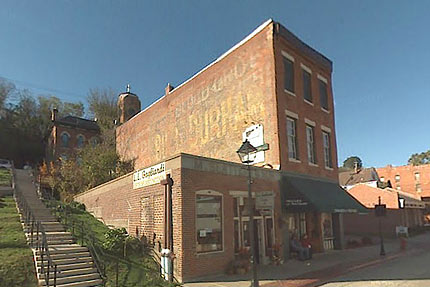 According to the Duke University Libraries Digital Collection, the Bull Durham brand originated during an incident at the close of the Civil War in Durham, North Carolina. Soldiers from both sides raided a farmer’s tobacco crop as they waited for surrender to complete. After returning home, the former soldiers wrote back to the farmer, Mr. John Green, asking for more of the tobacco. He obliged. The tobacco was named Bull Durham in 1868. Eventually it would become the largest selling tobacco brand in the world. Bull Durham print ads typically employed demeaning caricatures of blacks - however, the caricatures did not appear in wall advertisements.
According to the Duke University Libraries Digital Collection, the Bull Durham brand originated during an incident at the close of the Civil War in Durham, North Carolina. Soldiers from both sides raided a farmer’s tobacco crop as they waited for surrender to complete. After returning home, the former soldiers wrote back to the farmer, Mr. John Green, asking for more of the tobacco. He obliged. The tobacco was named Bull Durham in 1868. Eventually it would become the largest selling tobacco brand in the world. Bull Durham print ads typically employed demeaning caricatures of blacks - however, the caricatures did not appear in wall advertisements.
Other side of building has "Delicious and Refreshing Coca Cola" sign next to a "Spearmint gum - Chew it after every meal" sign.
421 South Main Street, Galena IL [map]
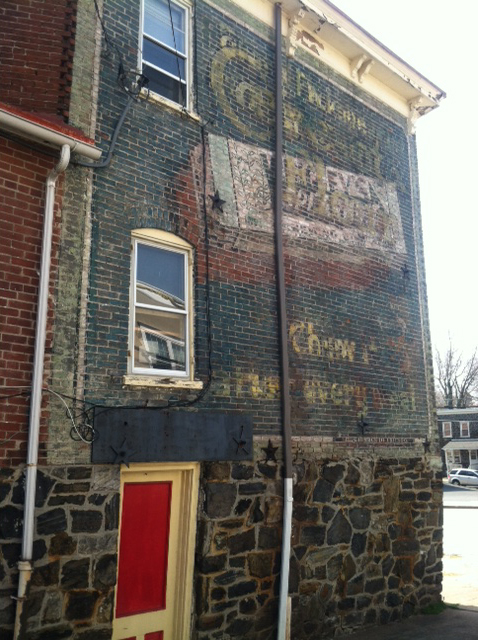 "Wrigley's Spearmint" with illustration and "chew it after every meal" tagline.
"Wrigley's Spearmint" with illustration and "chew it after every meal" tagline.
Older signage with title "Ceresota Flour" (at top) appears beneath.
Hannum Ave at West Chestnut Street, West Chester PA [map]
 "John Decker & Son
Architectural Sheet Metal Works
Tin Roofing, Cooper Cornices
Metallic Sky-Lights"
John Decker, a manufacturer of sheet metal roofing and cornices. Nephew of William Decker, architect of many of the brewery buildings and homes of brewers in the Brewerytown neighborhood. The building that John Decker had his business still stands at Girard, with a story high cornice emblazoned with dimensional lettering.
2702 W Girard Ave [map]
"John Decker & Son
Architectural Sheet Metal Works
Tin Roofing, Cooper Cornices
Metallic Sky-Lights"
John Decker, a manufacturer of sheet metal roofing and cornices. Nephew of William Decker, architect of many of the brewery buildings and homes of brewers in the Brewerytown neighborhood. The building that John Decker had his business still stands at Girard, with a story high cornice emblazoned with dimensional lettering.
2702 W Girard Ave [map]
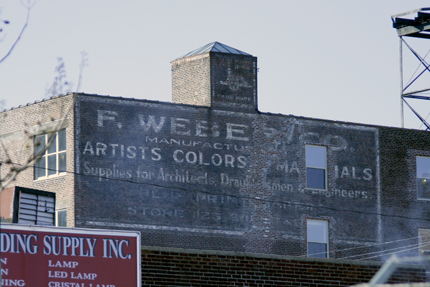 “F. Weber Co.
Manufacturers of
Artists Colors (&) Materials
Supplies for Architects, Dra(ughts)men & Engineers.
Blueprint Papers
Store 1125 Ch(est)nut”
“F. Weber Co.
Manufacturers of
Artists Colors (&) Materials
Supplies for Architects, Dra(ughts)men & Engineers.
Blueprint Papers
Store 1125 Ch(est)nut”
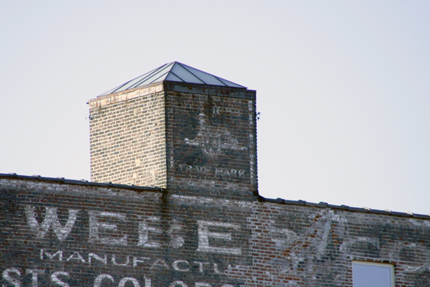 Symbol at top appears to be the winged lion logo with the words "TRADE MARK" below, as seen here in this 1927 advertisement.
Symbol at top appears to be the winged lion logo with the words "TRADE MARK" below, as seen here in this 1927 advertisement.
This building is listed as the Main Office and Factory in advertisements (Arts & Decoration, Volume 14, Nov 1920) and as a research lab with Weber as technical director and 2 chemists on staff (Industrial Research Laboratories of the United States, 1946).
Established in 1853 in Philadelphia, Pennsylvania, the Martin/F. Weber Co. is the oldest and one of the largest manufacturers of art materials in the United States. The company manufactured artists supplies, including painting and drawing supplies, mathematical instruments, materials for gilders, sign and coach-painters, china decorators, engineers, lithographers, etchers and engravers, as well as materials for pyrography or wood burning, and wax and paper flowers.
Originating in 1853 as Scholz & Company, a sales agency, the company evolved through a series of growth partnerships to become F. Weber and Company in 1887, under the leadership of its owner, Frederick Weber. Throughout the late 19th century, F. Weber and Company offered a wide range of imported and manufactured products. A significant number of patents for innovative art products were awarded to the company.
The disruption of commerce during World War I caused American artists to seek more American-made art materials thereby creating a need and an opportunity for F. Weber to expand its manufacturing capabilities. By the early 1920’s, in addition to its manufacturing and distribution facilities located here, F. Weber and Company also had three retail stores; in Philadelphia, Baltimore and St. Louis.
One of their most notable products is Original Permalba White, first formulated in 1921. Fred Weber was the first to develop a nontoxic, opaque, white oil paint with smooth working qualities to replace the toxic, lead-based whites that artists had used for hundreds of years. In the 1930’s Mr. Weber introduced new pigments to the industry with excellent lightfastness and reduced toxicity to the artist and synthetic varnishes to replace the less stable natural materials used in the past.
Still in business, located in Northeast Philadelphia. This building has been converted into loft apartments.
1220 Buttonwood Street [map]
